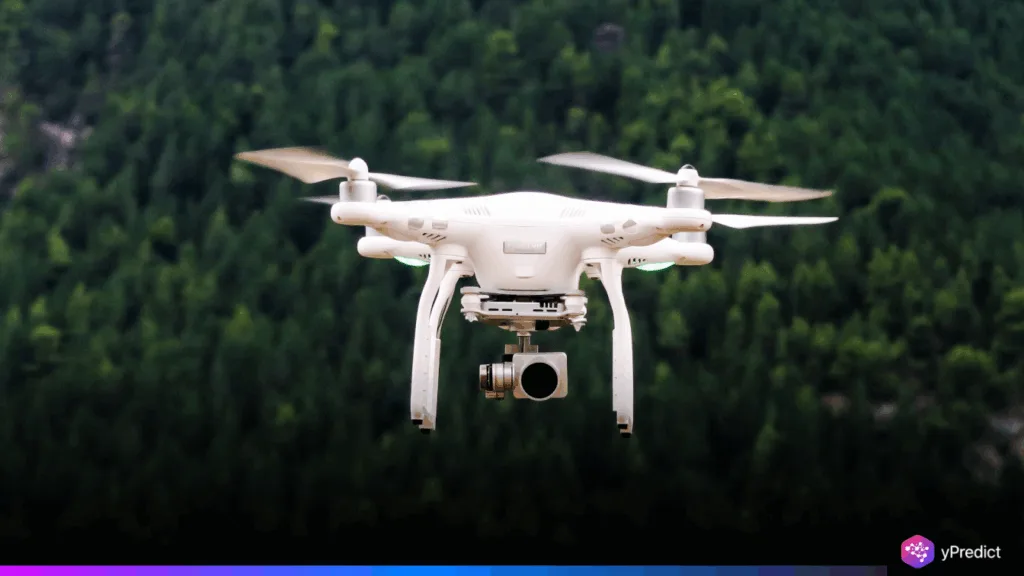
A newly recovered Russian drone in Ukraine contained Iranian anti-jamming technology and an AI computing platform, indicating a leap in autonomous and remote-controlled drone warfare. Identified by Ukrainian experts, the drone had eight antennas, suggesting it’s highly resistant to electronic interference. It also included a camera, radio link, and onboard AI navigation. Analysts believe the drone, likely supplied or co-developed by Iran, allows remote piloting from Russia and real-time mission updates. This AI-driven enhancement enables drones to change targets mid-flight, an upgrade from previous models that flew preset routes, marking a significant tactical and technological shift.
AI and Iran’s Role in Russia’s Drone War- A Strategic Evolution
Ukraine’s latest drone discovery, believed to be a Russian Shahed variant, featured a powerful AI computing module, radio link for remote control, and Iranian-made anti-jamming hardware. This shift toward AI-integrated systems enables drones to adapt mid-mission, alter flight paths, and avoid traditional countermeasures. AI allows the drone to navigate autonomously if GPS signals are jammed, increasing survivability and precision. The drone’s eight antennas (double the standard) are likely part of a sophisticated Iranian anti-jamming suite previously seen in missiles sent to Yemen’s Houthis. The inclusion of such high-tech components points to a growing fusion of Iranian defense innovations with Russia’s military production at its Alabuga plant.
AI navigation also enhances swarm coordination and real-time targeting, key advantages in Russia’s strategy of exhausting Ukrainian defenses with decoys, followed by warhead-equipped units. Ukrainian officials suspect the drone’s onboard AI could identify and strike critical infrastructure like transmission towers without operator intervention. Experts stress that while Israel’s recent strikes on Iran may disrupt future drone component supply lines, much of the critical software and manufacturing know-how has already transferred to Russia. For now, the AI-enabled Shahed represents one of the most advanced battlefield drones deployed in Ukraine.
AI-Driven Drones Redefine Russian Tactics in Ukraine
The AI system found inside the white, Iranian-labeled drone recovered in Ukraine marks a major advancement in autonomous strike capabilities. Unlike earlier models that relied solely on pre-programmed coordinates, this variant includes real-time navigation powered by artificial intelligence, a remote piloting radio link, and high-resolution targeting cameras. Experts say this changes the rules of engagement. With AI-assisted autonomy, drones can navigate around jamming efforts or dynamically reroute to new targets. They can also coordinate in swarm formations without centralized control, improving strike efficiency and complicating air defense responses.
The Alabuga facility in Russia has rapidly evolved Iranian Shahed designs into more lethal systems, including thermobaric payloads and jet-propulsion prototypes. This new AI-enabled model, according to specialists like Serhii Beskrestnov, could now serve as a testbed for multi-drone coordination, especially in complex environments. The drone’s appearance coincides with a tactical shift; Russia now varies flight altitudes and mixes decoys with armed drones to exhaust defenses. Ukrainian analysts have noticed increasing hit rates, with 16% of drones now reaching targets, up from 6% last year. AI and evolving strategies appear to be key factors. Though supply chain risks loom, Russia’s local production capabilities may sustain this new AI-fueled phase of its drone warfare.
Russia’s AI Drone Warfare Reaches New Heights
Russia has begun deploying AI-integrated drones with Iranian anti-jamming tech in Ukraine, marking a serious escalation in autonomous warfare. The drone’s onboard AI enables real-time path adjustment, dynamic targeting, and resilience against signal disruption. With eight antennas and remote-control capabilities, it’s engineered for contested airspace. This leap in drone intelligence also supports new tactics, using decoy swarms and mission reprogramming mid-flight. As Russia’s Alabuga factory continues enhancing Shahed variants with AI, autonomy is fast becoming a battlefield norm. While Israel’s strikes on Iran may threaten future supplies, the AI system shift is already altering Ukraine’s defense calculus.






